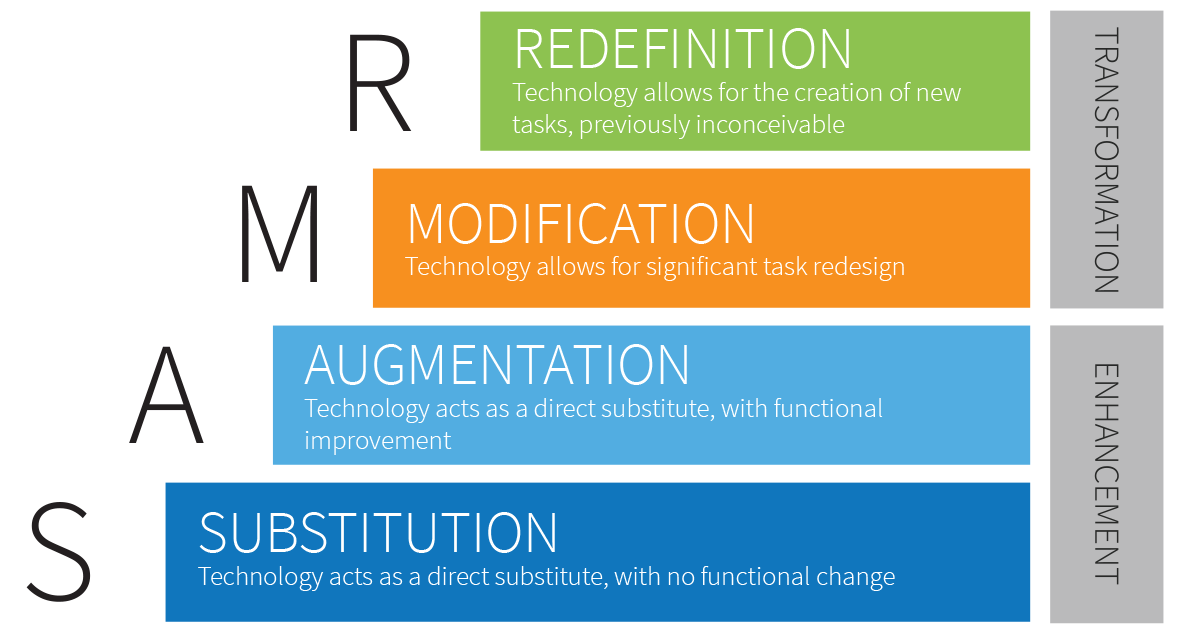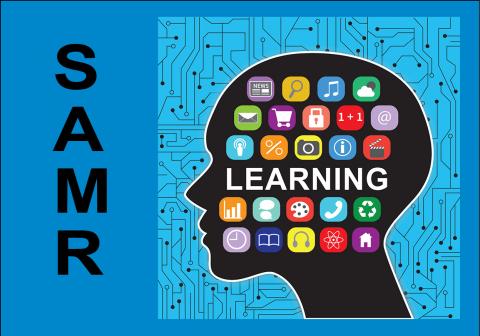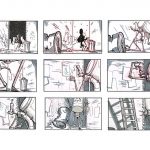In today’s class, we discussed a useful way to conceptualize technology usage in the classroom. SAMR, which stands for Substitution, Augmentation, Modification and Redefinition, was first popularized by Dr. Ruben Puentedura, who designed the model with the intention of clarifying different strategies for using technology in pedagogical contexts. Essentially, the model encourages teachers to think critically about how they integrate technology into the classroom, inserting it into specific contexts where it actively supports learning, rather than distracts or adds unnecessary complications.
While the model is not intended to be hierarchical, the amount of engagement with both the technology and the complexity of the exercises increases through each stage of SAMR:
- Substitution—Tech acts as a direct tool substitute, with no functional change ie. Typing out a paper on a computer instead of handwriting it.
- Augmentation—Tech acts as a direct tool substitute, with a functional improvement ie. Using spellcheck or grammar formatting programs to improve the quality of a paper.
- Modification—Tech allows for significant task redesign, ie. Presenting research in a poster presentation and posting that presentation on a GoogleDoc for real time feedback from other students.
- Redefinition—Tech allows for the creation of new tasks, previously inconceivable, ie. Instead of a paper or poster, students create a screenplay and use multimedia to produce a film which they share online.
It’s important to remember that not all classroom exercises call for “Redefinition.” In many situations, this level of technological integration will require too much time and resources, which could ultimately distract from student learning. It’s up to the educator to determine what the most effective use of technology will be in a given context, whether the time only allows for simple analog activities or a deep, multilayered dive into digital media could encourage greater student engagement. For me, SAMR provides a helpful paradigm for thinking about how technology can be used intentionally in my future classrooms.





